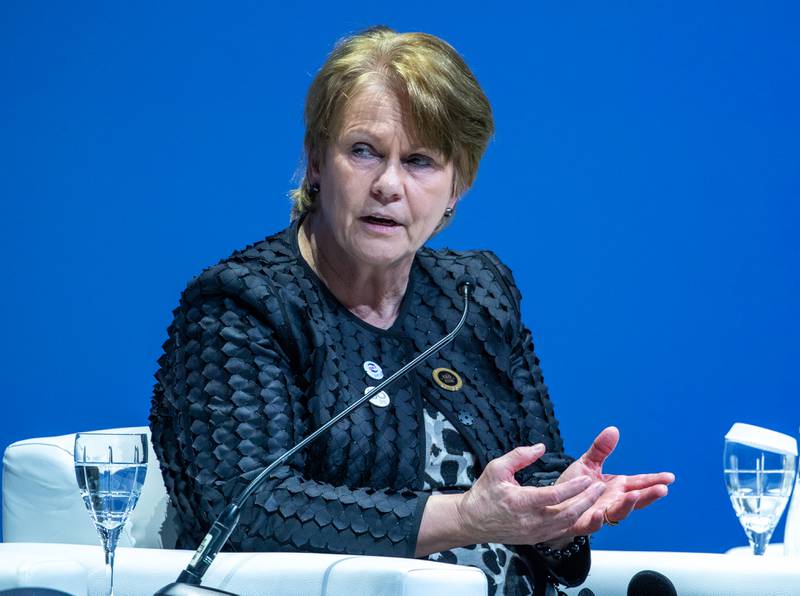Oxy CEO: Global oil demand to grow beyond pre-pandemic levels by 2023

Global oil demand will increase beyond pre-pandemic levels of 100 million barrels per day in 2023, accelerated by economic recovery in India and China, according to the president and chief executive of Occidental Petroleum.
“I think we'll get to a solid 100 million [bpd] demand or maybe a little bit more next year. But I think that by 2023 we'll start seeing those [levels] because I think China and India certainly have the opportunity to grow … both will have healthy economies once we get past the pandemic”, Vicki Hollub told The National in an interview.
Oil demand is likely to grow by 5.5 million bpd in 2021 and 3.3 million bpd in 2022 to 99.6 million bpd, according to the International Energy Agency. Opec expects demand for crude to be higher, reaching 100.6 million bpd next year.
The 100 million bpd mark for global oil demand has already been reached, according to "Big Oil" companies such as BP.
Demand for crude and linked products slumped last year as the spread of Covid-19 curtailed air and ground transportation. Oil prices fell, with US crude benchmark West Texas Intermediate trading briefly below zero as supply outpaced demand.
However, with border restrictions being eased and economies opening up, oil prices are currently trading at multiyear highs.
Key oil benchmarks — Brent and West Texas Intermediate — have gained more than 60 per cent since the beginning of the year and are hovering above $80 per barrel.
However, oil trading between $80 and $85 per barrel “is too high”, said Ms Hollub.
“What Opec+ has done has been what the world needed and [we] applaud them for being able to accomplish what they did because again, you'd have to have a market where supply and demand are balanced.”
Opec+, the group of producers headed by Saudi Arabia and Russia, is on track to add 2 million bpd of supply by the end of the year, reversing historic curbs it executed in 2020 amid a record demand crunch.
Ms Hollub, who heads the Permian basin's largest producer, said output from the US, the world's largest producer of crude, will remain constrained.
“So ultimately, I still think that production in the US would not get back above probably 12 [million bpd] and a half or so. So we won't get back to 13 [million bpd]," she said.
Occidental will continue to tap output growth from its concessions in the Middle East, particularly in the UAE and Oman.
The company recently won rights to develop Blocks 3 and 5 in Abu Dhabi as part of the national oil company's second bidding round.
Ms Hollub, who declined to comment on the potential volumes of the untapped reserves, said exploration of Block 5, which is across the border from its concession in Oman, was “very exciting".
Occidental is also trying to lower the carbon intensity of barrels produced in the US and around the world through its direct air carbon capture programme, in line with its pledge to reach net-zero emissions by the middle of the century.
The company is developing a facility in Texas with the capacity to capture and sequester 1 million tonnes of carbon dioxide annually. The facility, currently in design phase, will be completed by 2024.
The energy industry is the biggest source of carbon dioxide emissions globally and faces growing scrutiny over its impact on global warming.
The carbon capture and sequestration sector could have the potential to become “a $3-5 trillion industry”, Ms Hollub, said.
“It's going to be a big industry and that's why when we talk about Oxy becoming a carbon management company, that's what we're referring to.
“We can pretty much offset the carbon emissions from any barrels that we operate anywhere by using this direct air capture technology”, she said.
